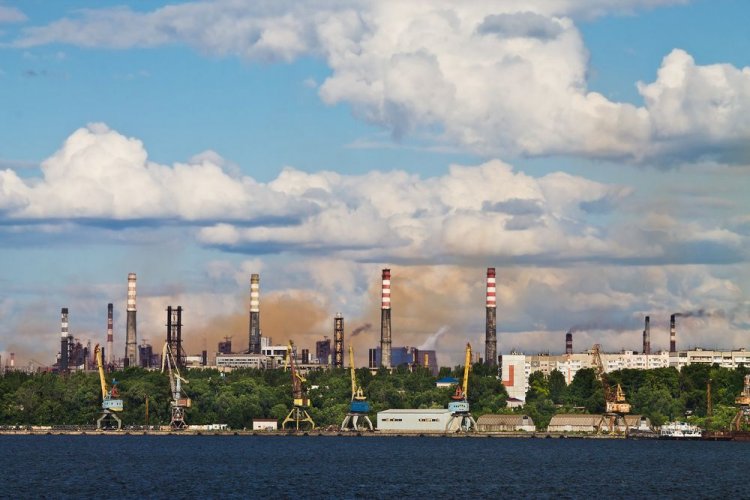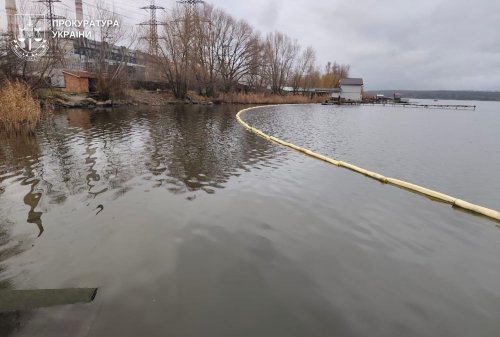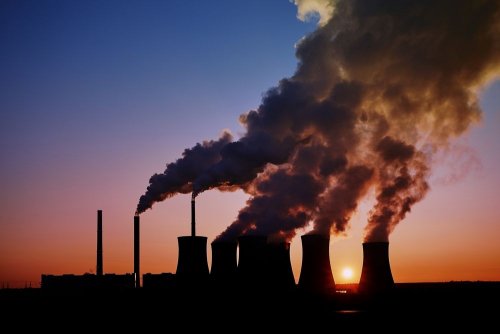On August 8, the Law of Ukraine No. 3855-IX "On Integrated Prevention and Control of Industrial Pollution" came into full force. It introduces a fundamentally new European approach to regulating the environmental impact of industrial enterprises. Its implementation raises many questions from both producers and the public.
Therefore, EcoPolitics has prepared an explanatory material to help its readers understand the innovations that have come into force.
The Law "On Integrated Prevention and Control of Industrial Pollution" was adopted by the Verkhovna Rada more than a year ago – on July 16, 2024. Discussions on this initiative lasted for more than 10 years. This legal act has been put to the voting floor many times before and has not been approved.
Why this law is important
This is a European integration document that is part of Ukraine's commitments under the Association Agreement with the EU. It adapts Ukrainian environmental legislation to the European Directive 2010/75/EU of the European Parliament and of the Council of 24 November 2010 on industrial emissions (integrated pollution prevention and control). This legal act introduces a new model of control over industrial enterprises that are the largest polluters.
The purpose of the law is to minimize the harmful impact of enterprises on the environment through an integrated approach to industrial pollution control. Now, instead of separate permits for emissions, discharges and waste, a single integrated environmental permit (IEP) is introduced, which takes into account all sources of impact on the ecosystem and is based on the application of the best available technologies and management methods (BAT).
Law No. 3855-IX defines:
- basic requirements for an integrated environmental permit;
- list of activities requiring it;
- issuance procedure;
- grounds for refusal to issue;
- grounds and procedure for revocation of an integrated environmental permit;
- requirements for mandatory application of BAT, emission monitoring and control of compliance with the terms of an integrated environmental permit.
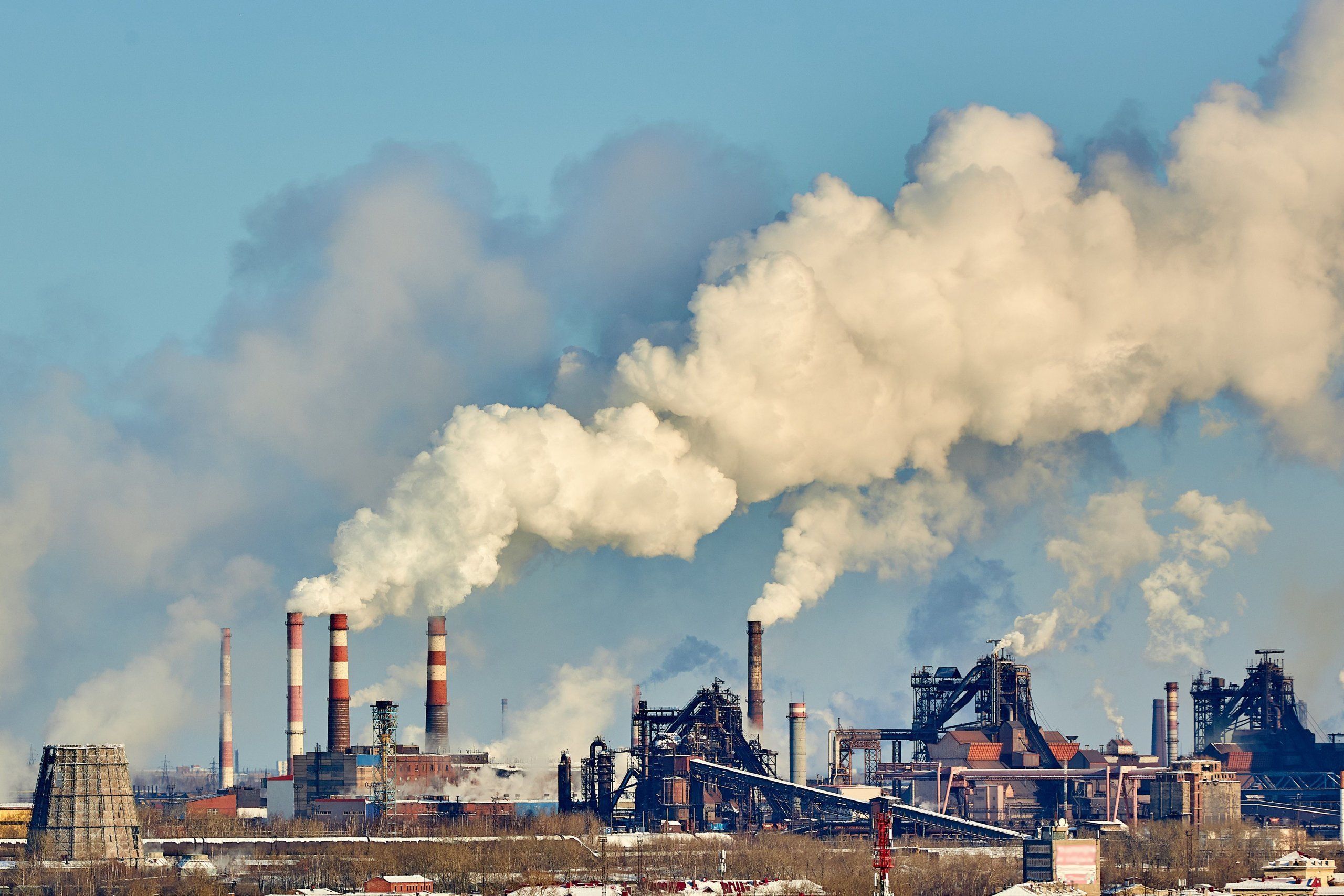
What is an integrated environmental permit
This is a new type of permit that combines permits for air emissions, discharges into water bodies, waste management, and other aspects of the company's environmental impact. It is issued not to the company as a whole, but to a specific facility that carries out potentially hazardous activities.
The main idea behind the introduction of an IED is to prevent pollution rather than to respond to its consequences after the fact. The IPD is based on the principles of:
- best available technologies and management methods, i.e. the implementation of modern technological solutions that minimize environmental damage;
- integrated approach, i.e. taking into account all types of environmental impacts of the facility in one document;
- transparency, i.e. mandatory public discussion of documents submitted for obtaining a permit.
Which enterprises are required to obtain an IEP
The Law on Integrated Industrial Pollution Prevention applies to operators of facilities engaged in potentially hazardous industrial activities, primarily large enterprises with a significant impact on the environment. An exhaustive list of 40 types of activities requiring an IED is provided in the Annex to Law No. 3855-IX on Industrial Pollution. These include production processes in the following areas:
- energy;
- production and processing of metals;
- mineral processing industry;
- chemical industry;
- waste management;
- other activities (including livestock, crop production, wood processing, carbon production, wastewater treatment).
According to Art. 2, this Law does not apply to pilot production and testing of new products and processes.

How to obtain an Integrated Environmental Permit
The procedure for obtaining an IED is clearly regulated by the Law. It provides for the submission of documents exclusively in electronic form through the Unified State Register of Integrated Environmental Permits, which will operate on the EcoSystem platform.
In the second half of May, the Ministry of Ecology invited members of the public to join the second stage of testing the IT system for issuing integrated environmental permits. Since then, there have been no reports on the degree of its readiness for launch.
Here is the procedure for obtaining an IDD in the infographic from the Ministry:
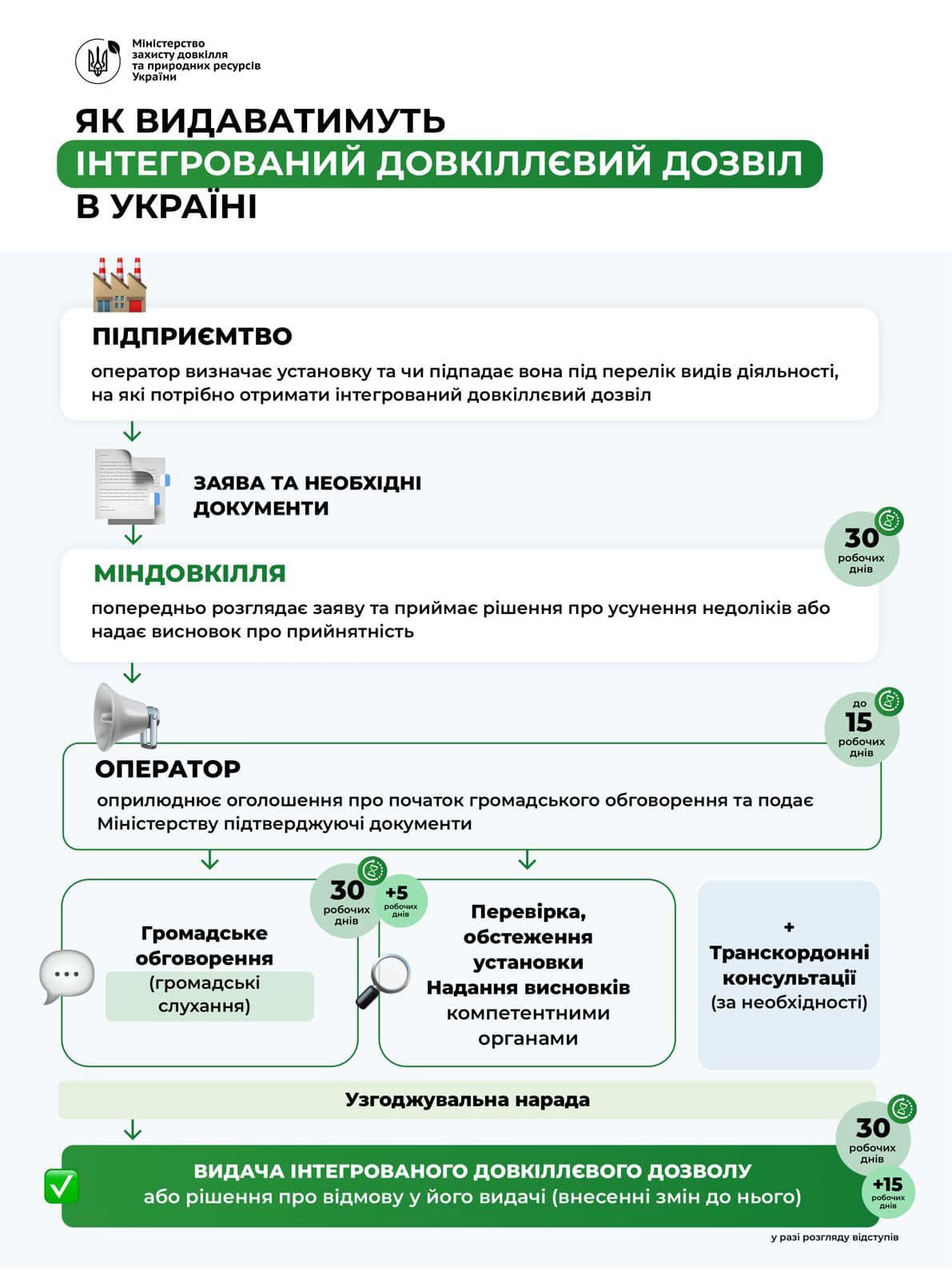
Infographic: facebook.com/EnvironmentalofUkraine.
A more detailed algorithm for enterprises to obtain an IEP is as follows:
- Identify the installation and whether it falls within the list of activities for which an integrated environmental permit is required under the Law.
- Submit an application for an IED and all necessary documents to the Ministry of Economy, Environment and Agriculture of Ukraine. We have described in this material what information should be provided in the application and the list of documents to be attached to it.
- Wait up to 30 business days for the Ministry to conduct a preliminary review of the application. If necessary, the ministry will provide additional clarifications. Based on the results of the review, it will either recognize the application as acceptable or notify you of the need to eliminate the deficiencies.
-
If the application is accepted, publish an announcement to initiate public consultation.
-
If deficiencies are identified, correct them within 30 working days and resubmit the application.
- After the documents are published in the Integrated Environmental Permits Register, a public discussion will be held for 30 working days. During this period, the public will have the right to submit any comments and suggestions in writing or orally during public hearings. At the same time, state environmental inspectors will be conducting inspections and surveys of the plant and the industrial site. If necessary, cross-border consultations will also be initiated.
- Upon completion of the public discussion, the State Environmental Inspectorate and other competent authorities (State Water Resources Agency, State Emergency Service, Ministry of Health, State Agency on Energy Efficiency and Energy Saving, Regional State Administration/Civilian Military Administration) shall provide their conclusions within 5 business days. Other executive authorities and local governments may also submit their own proposals and comments on the operator's application.
- The final stage is the issuance of an IDD or a decision to refuse to issue it. The Law allocates 30 business days for this stage. Within this period, a conciliation meeting may be convened to review the draft IED with the participation of representatives of the Ministry of Economy, Environment and Agriculture, the facility operator, competent authorities, local governments and the public.
The term of the integrated environmental permit is unlimited. If a company has received an IED for its facility, it has the right to put it into operation.
EcoPolitics has described in this article what form the integrated permit will take and what information it will contain.
How much time will enterprises have to obtain integrated permits
Although the law will come into force on August 8, 2025, operators of existing facilities will have a transitional period of 4 years to prepare and obtain an integrated permit in time. It provides for 3 years to submit an application plus another 1 year to obtain an integrated environmental permit.
However, the specific timeframe for the transition to an IED will depend on the "type" of installation. There are 4 possible options:
-
existing installations that plan to continue operating;
-
existing installations to be decommissioned within 10 years from the date the law comes into force, which will effectively receive a so-called “permit for closure”;
-
installations being put into operation for the first time;
-
installations being put into operation for the first time within 1 year from the date the law comes into force.
The conditions for the integrated permit for such installations will differ during martial law and after its termination or cancellation. The countdown starts from August 8, 2025-the date the law on industrial pollution comes into effect. For convenience, the Ministry of Environment has presented this information as an infographic:
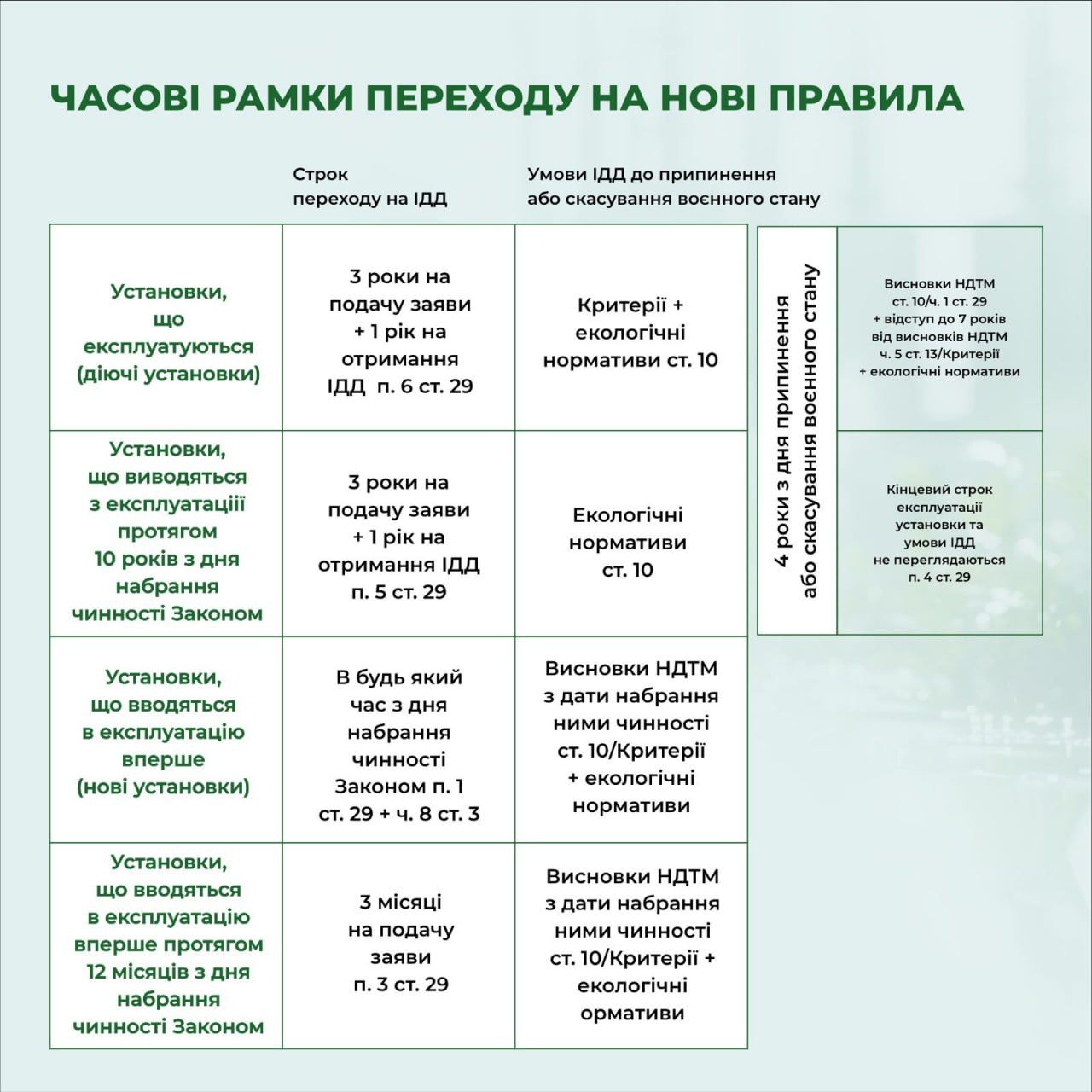
Source: t.me/mindovkillia.
In other words, in order to obtain an IED for a new facility, it must comply with the conclusions of the best available management practices and technologies (BAT) from the date of their entry into force.
For existing facilities, the requirement to comply with BAT is postponed for 4 years from the date of termination or lifting of martial law.
How much does it cost to obtain an IDD?
According to Art. 6 of the Law "On Integrated Industrial Pollution Prevention and Control", the fee for issuing such a permit is set at 30 subsistence minimums for able-bodied persons. Currently, this minimum is UAH 3,028, which means that the state budget will have to pay UAH 90,840 to obtain the IAP.
The fee is not charged for amending the integrated environmental permit under the simplified procedure, as well as in case of revision and updating the terms of such a permit.
Who can obtain a derogation from BAT conclusions when obtaining the first integrated permit
Article 13 of the Law on Industrial Pollution provides that in certain cases, less stringent maximum permissible emissions may be set for a particular operating facility than the standards set out in the BAT conclusions – the so-called derogation.
In mid-June, the Ministry of Environmental Protection and Natural Resources of Ukraine formulated requirements for the development, form, and content of the assessment of such derogations, but they have not yet been approved by the Cabinet of Ministers of Ukraine.
The draft resolution stipulates that in order to determine whether an installation is eligible for a derogation, it is necessary to calculate the cost of achieving the maximum permissible emissions set out in the BAT conclusions and calculate the economic disproportionality coefficient Ken.
If the value of Кеn < 1, the derogation is granted for the period specified by the operator as "Derogation period, years", but not less than 3 years. If Ken is ≥ 1, no derogation is granted.
More details on derogation conditions and calculation methodology can be found in our article at this link.
Previously, Ecopolitics has also reported on how the integrated environmental permit register will function and what information will be included in the registration file.

